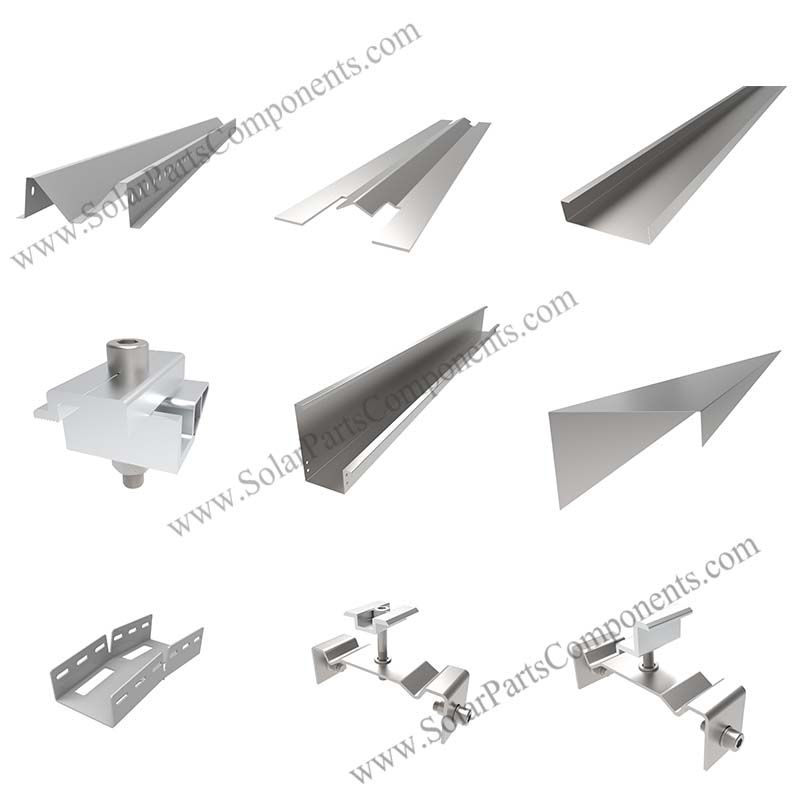1. Is My Industrial Factory Rooftop Suitable for Both Solar Panels and Waterproofing?
Most industrial rooftops can support a combined system, but a professional must assess it first. Key factors include:
-
Structural Load Capacity: Confirm your roof can bear the weight. Solar panels typically add 2-4 lbs per square foot, plus waterproofing materials. An older factory may require a structural inspection.
-
Roof Age & Condition: Update waterproofing before solar installation if your roof is over 10 years old or shows cracks, leaks, or degraded membranes. This avoids costly future repairs that require panel removal.
-
Roof Type Compatibility: Metal roofs and single-ply membranes (TPO/PVC) work best. They pair easily with waterproof mounting brackets. Concrete roofs may need extra insulation layers.
2. How Does Solar Installation Affect Rooof Waterproofing?
A qualified team experienced in both fields can enhance long-term roof protection. Proper installation prevents leaks. Here’s how:
-
Waterproof Mounting Solutions: Modern brackets use rubber gaskets, butyl tapes, or sealant rings. These create a watertight seal at every attachment point, leaving no exposed holes.
-
Reduced Roof Exposure: Solar panels shield the membrane from UV rays, rain, and debris. This protection can extend your waterproofing system’s lifespan by 5-10 years.
-
Integrated Waterproofing Layers: For flat roofs, installers often apply a seamless, liquid-applied membrane before laying the racking. This creates a unified barrier.
Note: Poor installation with unsealed holes or mismatched materials can damage waterproofing.
3. Which Waterproofing Materials Work Best with Industrial Rooftop Solar?
The best materials depend on your roof type and climate. These industry-proven options offer excellent solar compatibility:
(Note: Your original text for this section ended abruptly. A professional would list specific materials like TPO/PVC membranes, liquid-applied polyurethane, or modified bitumen systems here.)
4. Will Combining Solar and Waterproofing Disrupt My Factory Operations?
Careful planning minimizes disruption. Installers use these strategies to mitigate downtime:
-
Phased Installation: Teams work on sections (e.g., one-quarter of the roof per week). This keeps the rest of the roof functional and protected from weather.
-
Off-Hours Scheduling: Most crews offer night or weekend work for factories with 24/7 operations.
-
Temporary Waterproofing: Installers cover exposed areas with temporary tarps or membranes to prevent leaks during the project.
A typical 10,000 sq ft project takes 2-4 weeks. Proper planning ensures zero impact on indoor production.
5. How Long Will the Combined System Last?
Each component has a different lifespan:
-
Solar Panels: 25-30 years (most warranties cover this period).
-
Waterproofing Membrane: 15-20 years with maintenance. Liquid-applied membranes often last longer than sheets.
-
Mounting & Seals: 10-15 years. You can replace them without removing the solar panels, reducing maintenance costs.
Maximize lifespan with annual inspections. Check for cracked sealants, loose panels, or membrane damage after severe weather like high winds or hailstorms.
6. Is There a Cost Benefit to Combining Solar and Waterproofing?
Yes. Combining projects saves money and improves your return on investment (ROI) in three key ways:
-
Lower Labor Costs: You avoid paying for separate roof access, scaffolding, and labor teams twice.
-
Energy Savings Offset Costs: Solar panels can reduce electricity bills by 30-70%. Industrial facilities often recoup their investment in 5-7 years.
-
Longer Roof Lifespan: Solar panels protect the membrane, delaying costly replacements. Industrial roof replacements can cost $3-5 per square foot.
Many regions also offer tax incentives or rebates (e.g., the U.S. Investment Tax Credit) that can cover 20-30% of the total project cost.
7. What Maintenance Does the Combined System Require?
Routine maintenance is simple and low-cost:
-
Quarterly Checks: Inspect sealants around brackets for cracks. Clean debris from panels to ensure efficiency and prevent moisture traps.
-
Annual Professional Inspection: A contractor should test the membrane for leaks (using infrared scanning) and check solar wiring for damage.
-
After Severe Weather: Inspect for loose panels or torn membranes after heavy rain or high winds. Address any issues within 48 hours.
Avoid power washing, as high pressure can damage seals. Use a soft brush and mild detergent instead.
8. What If My Roof Needs Repairs After Solar Installation?
Modular solar designs make repairs manageable:
-
Localized Repairs: For a small leak, installers can remove just one or two panels to fix the issue. They do not need to disassemble the entire array.
-
Major Roof Replacements: If the membrane fails after 15-20 years, crews can safely remove, store, and reinstall your existing panels on the new roof. This saves you the cost of buying a new solar system.








